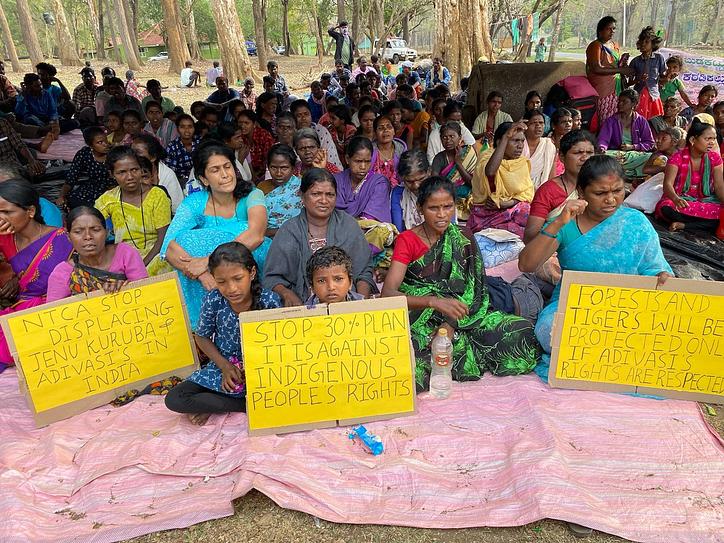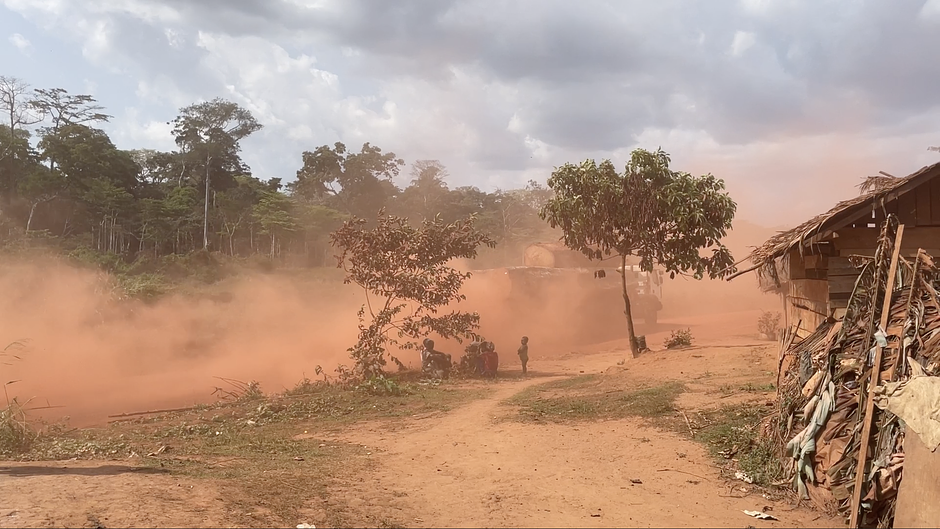In a dramatic and unprecedented negotiation, which included walk outs and stand offs until the very end, the Global Biodiversity Framework (GBF) was finally adopted this morning at COP 15 in Montreal. This is supposed to lay out an important action plan for “nature protection” until 2030. However, it failed to take the bold step required to really protect nature – to recognize that Indigenous peoples are the best conservationists and that the best way to protect biodiversity is to protect their land rights.
Survival International, alongside Indigenous people and other NGOs has fought tirelessly for two years to stop the 30% target (Target 3) - the plan to turn 30% of the planet into Protected Areas by 2030 - becoming the biggest land grab in history. We didn’t manage to stop the adoption of the 30%, pushed as it was by the most powerful forces in the world: including Global North governments and the conservation industry. Nevertheless, we played a major part in ensuring that the 30% target was the most controversial part of the GBF, showing that “fortress conservation” – the evictions of Indigenous peoples and human rights abuses, in the name of nature protection - will no longer be tolerated as the collateral damage of conservation. And, along with Indigenous organizations, we won that battle. The 30% target, adopted today, doesn’t include references to a “strictly protected” category, as was first proposed, and it does include references to recognizing and respecting Indigenous peoples’ rights. This is a marked difference from the previous version of this target, agreed in 2010 .
But unfortunately, even if the language is a step forward in the fight to stop abuses in the name of conservation, we are very far from real and genuine change to the model of conservation that has resulted in the eviction of at least 14 million people in Africa alone. Despite a last-minute and powerful intervention by the International Indigenous Forum on Biodiversity, calling for Indigenous territories to count towards the 30 percent target, this demand was rejected, principally by European countries, despite widespread evidence showing that Indigenous Peoples protect their lands better than anyone else and that their territories should be a key mechanism in biodiversity protection. This once again showed that the colonial mentality in conservation - that claims that “Western conservationists” “know best” - is still alive and well.
Another positive step is that our battle to stop the references to Indigenous rights being relegated to an unenforceable preamble was won. Instead, an introductory section, (Section C) highlights the “considerations” for the implementation of the framework, which clearly state that the new plan must ensure that the rights, worldviews, values and practices of Indigenous Peoples and local communities are respected, in keeping with the UN Declaration on the Rights of Indigenous Peoples. Having this wording in the GBF is a major step forward, but there are still questions about what happens if these obligations are not adhered to.
The “Nature Positive” slogan, beloved of the conservation industry and big businesses, was not included in the GBF, but another meaningless and dangerous slogan, Nature-based Solutions, is still there (Target 8 and Target 11). This is being pushed by European countries as a climate mitigation mechanism, which, as we have shown, will only lead to more land grabs and human rights abuses and will do nothing to mitigate climate change.
The targets aimed at addressing the underlying causes of biodiversity loss are very weak and will not be effective, proving once again that the conservation industry and its backers are enthusiastic about others, usually Indigenous and local people in the Global South, having their rights violated in the name of conservation, but not so keen to fight against the biggest drivers of biodiversity loss – such as overconsumption in the Global North.
The Global North, as usual, has not taken any responsibility for the destruction of the environment and has put the burden on the Global South, helped in this by the conservation industry who has everything to gain from money rolled out for more Protected Areas and false Nature-based solutions.
This framework has definitely failed biodiversity, it has failed justice and could still fail Indigenous peoples if, as we’ve seen before, promises to respect the rights of Indigenous people are ignored by the conservation industry, leading to horrific abuses in the name of “nature protection”.
Fiore Longo said, “What we saw in Montreal is evidence that we can’t trust the conservation industry, business and powerful countries to do the right thing. We will keep fighting for the respect and recognition of Indigenous land rights. Whoever cares about biodiversity should be doing the same thing. We will continue closely to monitor the implementation of the agreement to ensure that the conservation industry complies strictly with the new requirements for it to respect Indigenous peoples’ rights”.
1 Aichi Target 11: “By 2020, at least 17 per cent of terrestrial and inland water, and 10 per cent of coastal and marine areas, especially areas of particular importance for biodiversity and ecosystem services, are conserved through effectively and equitably managed, ecologically representative and well connected systems of protected areas and other effective area-based conservation measures, and integrated into the wider landscapes and seascapes”.






